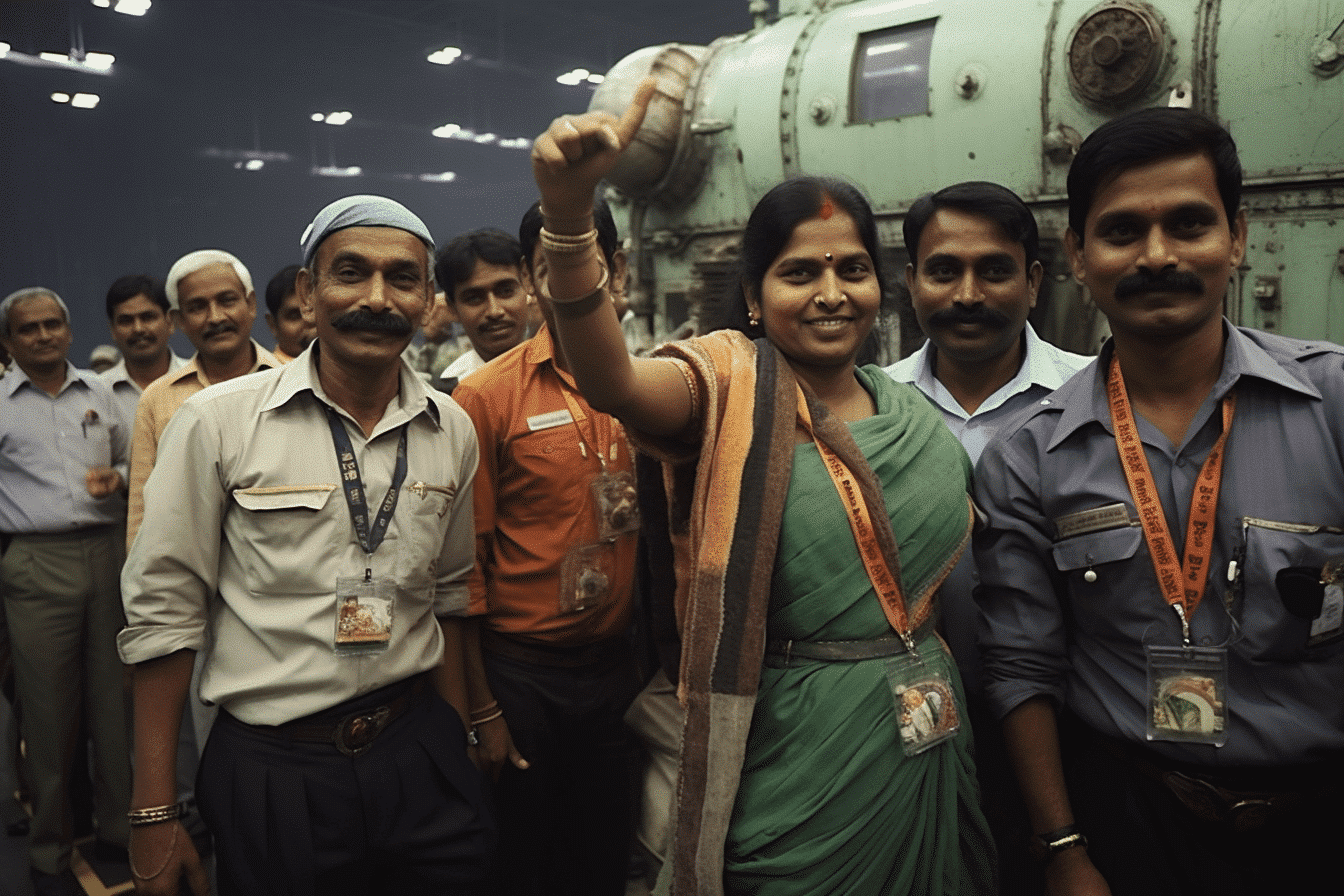In a historic moment, India became the first nation to successfully touch down a spacecraft in the unexplored vicinity of the moon’s south pole. This groundbreaking venture, believed to target potential reserves of frozen water, underscores India’s position on the global technological stage.
The lander, housing a rover, made its descent onto the lunar expanse at 6:04 p.m. local time, setting off waves of elation across India. Notably in Bengaluru, the nerve center of India’s space endeavours, scientists rejoiced at this accomplishment. Bouncing back from a 2019 setback, India now stands shoulder to shoulder with the US, Soviet Union, and China in achieving this lunar feat.
This landmark moon mission amplifies India’s burgeoning role as a space and technological superpower. This resonates with the image Prime Minister Narendra Modi envisions for India – a nation on the rise, claiming its rightful place among world leaders.
Marking this historic event, Modi stated, “India has now carved its signature on the moon, achieving what no other nation has. This is a chapter in history,” as he proudly displayed the Indian flag during his South African visit to the BRICS summit.
Soon, the lunar rover will commence its studies, including mineralogical investigations, informed S. Somnath, the head of the Indian Space Research Organization. India has set its sights next on a manned lunar mission.
Last year, India emerged as the world’s fifth-largest economy. This space triumph is expected to bolster Modi’s stature ahead of upcoming elections.
This accomplishment is even more significant given the recent unsuccessful attempt by Russia’s Luna-25, aimed at the same lunar area. The Russian endeavour highlighted the challenges of returning to lunar missions after long hiatuses.
Throughout India, eager citizens gathered around screens in various settings united in anticipation. Moments like these were shared in a planetarium where attendees transitioned from silent prayers to exuberant cheers.
Testimonials of pride and joy flooded in globally, emphasizing India’s ascent in the space community. Notable figures and agencies, from the U.S. State Department to the European Space Agency, lauded the achievement.
India’s Chandrayaan-3 launched from Sriharikota on July 14. This mission cements India’s trajectory in space sciences, says an earlier statement from the Indian Space Research Organization. The moon’s south pole intrigues many due to its potential water deposits, vital for future explorations.
Chandrayaan-3’s rover is equipped to provide comprehensive data on lunar geological compositions. The 2019 endeavour, though unsuccessful, laid the groundwork by confirming water presence through the Chandrayaan-1 mission in 2008.
Amidst India’s success, regional competitors like China and others, such as Japan, are racing to imprint their marks on the lunar landscape. Yet, despite earlier failures and global competition, India persevered.
Pallava Bagla, a renowned space analyst, noted, “Despite challenges, India remained unswayed. Their unyielding determination and lessons from the past paved the way for today’s success.”
India’s triumph in this lunar mission is not just a monumental leap for its space program but also a testament to the nation’s resilience, innovation, and determination. As countries race towards new frontiers in space exploration, India’s successful landing near the moon’s south pole shines brightly, reflecting its capabilities and vision for the future. The world watches and applauds as India charts its course in the cosmic theatre, setting an inspiring precedent for many more milestones to come.




